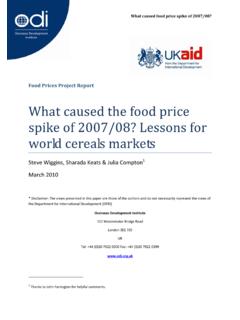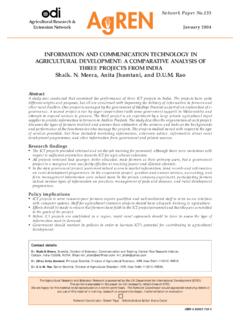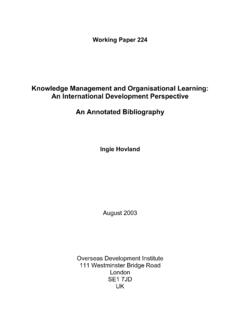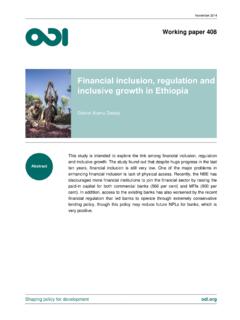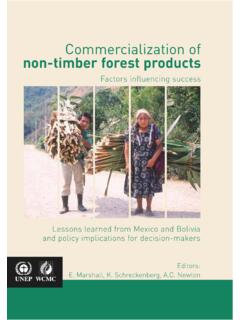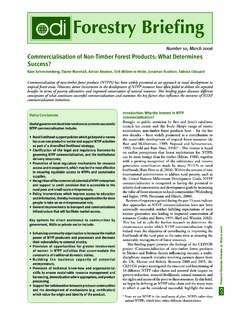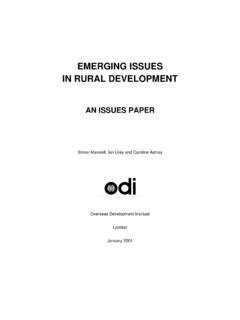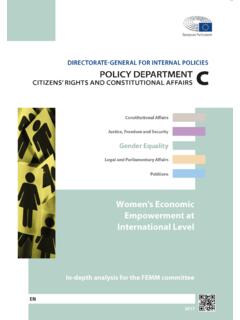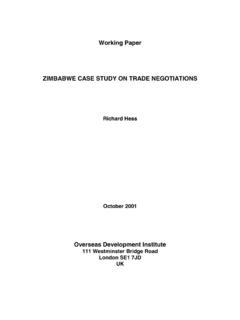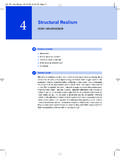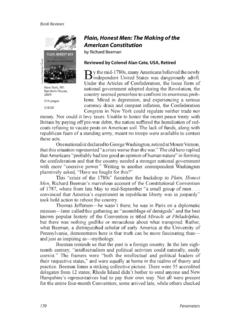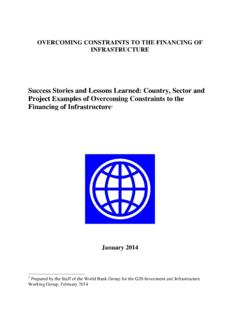Transcription of ASSESSING POLITICAL ACTORS RELEVANT TO …
1 ASSESSING POLITICAL ACTORS RELEVANT TO POLICY ACTORS in policy area1 Priority of policy area for actor2 Actor s reasons for exerting influence in policy area3 Actor s resources for influencing outcomes in policy area4 Degree of influence in policy area5 Actual and potential alliances among actors6 1 Who are the key POLITICAL , economic, and social ACTORS ( POLITICAL parties, party leaders, unions, pressure groups, etc.) and the key state ACTORS (presidents, ministers, advisors, governors, mayors, ministries, organizations, etc.) in this policy area? Include international ACTORS (DFID, World Bank, WTO, IMF, Christian Aid, etc.). 2 How high a priority is this policy area to the actor? Calibrate the policy area as high, medium, or low priority for the actor. Explain. 3 What does the actor want to achieve by influencing policy in this area?
2 4 What POLITICAL resources (money, votes, connections, etc.) does this actor have at its disposal for influencing the policy area? 5 Calibrate the actor s power as high, medium, or low in the policy area. Explain. 6 What actual and potential alliances exist among ACTORS to oppose or support policy change? Some Notes on POLITICAL Mapping POLITICAL maps are meant to be a tool for strategic thinking about promoting, implementing, and sustaining policy change. To be useful tools, they should be as specific and detailed as possible in order to provide guidance in strategic thinking. As you assess the individual feedback on your first POLITICAL maps and begin to think about the second, you might find it helpful to consider the following notes. ACTORS : In general, POLITICAL action is undertaken by organizations (or, at times, individuals), not sectors.
3 That is, it is often a particular organization of business interests that engages in efforts to influence policy, not industrialists. Similarly, particular unions, not workers in general, are responsible for strikes, protests, lobbying efforts, get out the vote drives, etc. This kind of reasoning also applies to POLITICAL parties information specific to the Republican or the Democratic Party will probably be more useful than information about POLITICAL parties more generally. The same logic holds true for international interests. In any POLITICAL strategy that you devise, you will probably direct activities toward specific ACTORS whose support you want or whose opposition you wish to undermine. Therefore, the more specific you are about whom these ACTORS are, the more focused and useful your strategy can be. Priority of a policy area: Some ACTORS are intensely focused on a particular policy area because it is central to their mission.
4 An example of this would be teachers unions and education policy. Many ACTORS , however, have interests in a number of policy areas and any one of them may be less intensely of concern to them. For example, a POLITICAL party may be interested in education, but also have many other areas of policy concern; as a consequence, it might not be willing to use all its POLITICAL capital in a conflict over education policy. Similarly, an international organization like the World Bank may have many projects in a country and you need to gauge the importance of, say, privatization, in the organization s overall country portfolio. Equally, some countries are more important to the Bank than others, so this will also give you some insights into how much the Bank would be interested in pushing its concerns in the particular policy area.
5 Presidents have many things they want to accomplish, a number of priorities, and a number of problems they must give their attention to so it is important to understand the relative priority they give to the policy area of your concern. Reasons/Objectives: ACTORS have stated objectives in many policy areas. Thus, for example, a union organization in the context of privatization policy would be clear and forceful in proclaiming its objective in protecting workers from losses of jobs. At the same time, the union may have some unstated organizational objectives, like demonstrating to its membership that it can protect them in such conflicts, being more influential than another union, legitimizing its role as protector of the workers, expanding its membership, negotiating in order to acquire POLITICAL capital to use in another situation, etc.
6 International financial institutions may have the objective of increasing economic liberalization, but they also want to demonstrate successful programs/projects to headquarters, move money, show that their approach is better than some other organization s approach, increase their connections with certain officials in order to push for other changes later, etc. Think carefully about what some of these non-public or non-obvious organizational goals may be. Resources: The more specific you can be about the quantity and use of resources, the better. For example, it is useful to know that a particular union controls 100,000 votes for the New Visions Party or that an association of big business has close ties to current leadership of the ministry of finance. Votes how many and for whom? Money for use in what kinds of ways (to finance campaigns, to invest/not invest, to bribe officials, etc.)
7 ? Connections with whom? Degree of influence: Why do some ACTORS have a lot of influence or why do they have moderate or low influence? For example, an international organization may have a lot of influence because it works directly in a particular ministry shaping policy. An association of business people may be particularly influential because many government officials have interests in their businesses or because elite networks mean that they belong to the same country clubs and often go to dinner together, etc. Another organization may have low or moderate influence because its membership opposed the party in power in the last elections, etc. Alliances: Again, specificity is important here. What are the groups that the actor is currently allied with? What are potential alliances if some change in the policy area were being discussed? Instructions: Using the POLITICAL , Economic, and Social ACTORS Matrix you just completed, array ACTORS according to their position vis- -vis your reform.
8 Does the actor support the reform? Oppose it? Is the actor undecided? Are there existing networks or alliances among ACTORS ? Indicate these with a broken line. You will also use this graphic in conjunction with the Government and Bureaucratic ACTORS Matrix. You may wish to use it as part of the final product of the course, the POLITICAL and Bureaucratic Feasibility Assessment. Be sure to save it on your computer!Capacity to influence:HighMediumLowPED-313 The Politics of Development PolicyCountry:_____Policy Area:_____Reform:_____Name:_____CIRCLE OF INFLUENCER eformSupportOppositionUndecidedINSTITUTI ONAL CONTEXTS FOR POLICY REFORM Organizational /inter-organizational arena What ACTORS have access to this institutional context? What rules of the game within the institutional context are particularly RELEVANT to your policy reform?7 What resources of power/influence are RELEVANT in this institutional context?
9 8 How important is this institutional context to the outcome of your policy reform?9 Definitions: Institutions are the rules of the game that shape social, POLITICAL , and economic interactions (see Douglass North, 1991, for more on this definition). Institutions can be a set of rules like those found in a constitution, a regulatory or trade regime, a POLITICAL regime, executive-judicial relations, elections, a POLITICAL party system, a civil service system etc. They can also be common ways of doing things, such as clientelism or various forms of corruption. Institutional contexts are the arenas in which such rules are exercised, such as a parliament, a ministry, an independent regulatory body, or the interactions among such organizations. 7 For example, majority vote wins, POLITICAL friends receive priority treatment, military considers itself arbiter of civilian politics, presidential preferences usually win, congressional committees have considerable power over legislation, etc.
10 8 For example, the ability to sway public opinion, the ability to make a good technical argument, the use of money for campaign contributions, ability to put together winning coalitions, the capacity to appoint supporters to important positions, having enough money to use for bribes, etc. 9 High, medium, low. Explain. POLICY PROCESS MATRIX* Process Phase Mobilizing POLITICAL Support/ Managing Opposition Technical, Legal, and Regulatory Issues Budgetary Issues Organizational Management Issues Training and Other Capacity Building Issues Getting the reform on the POLITICAL agenda Designing the reform Gaining approval for the reform Implementing the reform Sustaining long-term reform * Note: This matrix asks you to assess, for each phase of the policy process, the activities that need to be accomplished in order to increase the survival potential for the reform you have chosen.
